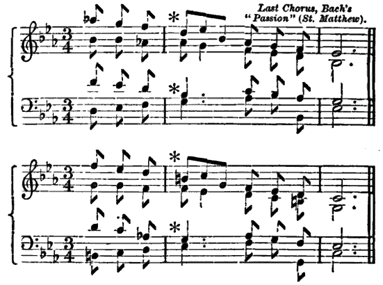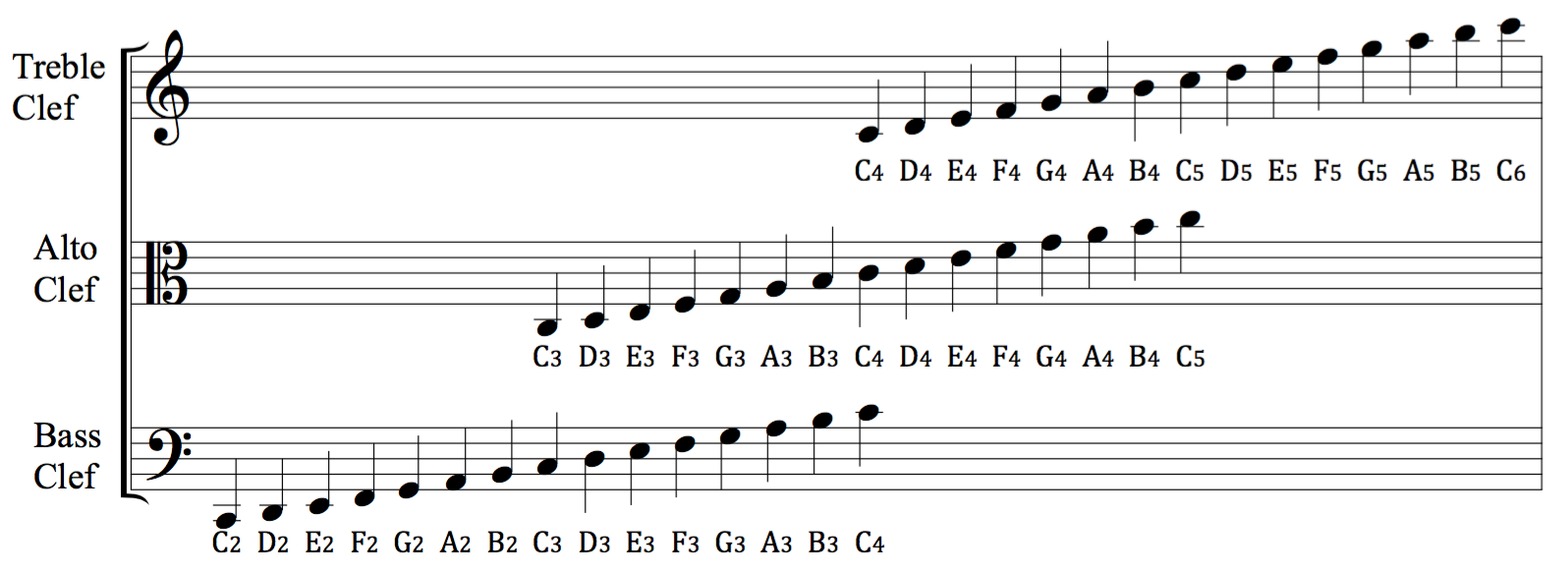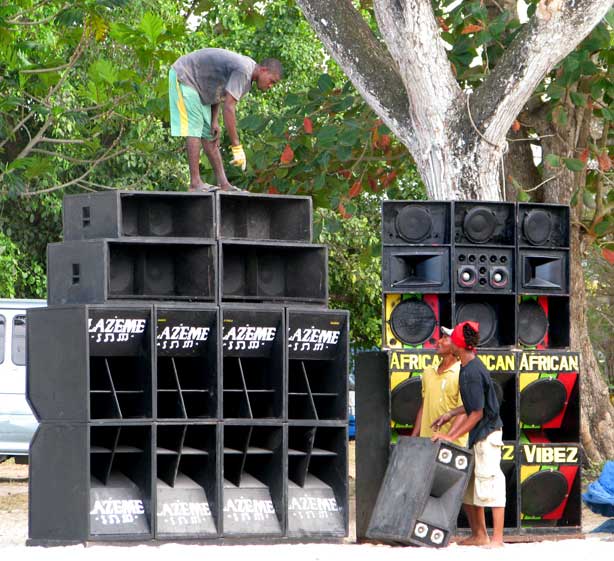|
Treble (sound)
Treble describes tones of high frequency or high pitch, ranging from 6 kHz to 20kHz, comprising the higher end of the human hearing range. In music, this corresponds to ''high notes''. The treble clef is often used to notate such notes. Treble sound is the counterpart to bass sound. Examples of treble sounds include soprano voices, flute tones, and piccolos. The term ''treble'' derives from the Latin ''triplum'', used in 13th century motets to indicate the third and highest range. The treble control is used in sound reproduction to change the volume of treble notes relative to those of the middle and bass frequency ranges. See also * Boy sopranos *C (musical note) * Treble booster * Treble voice *Tweeter A tweeter or treble speaker is a special type of loudspeaker (usually dome, inverse dome or horn-type) that is designed to produce high audio frequencies, typically from 2,000 to 20,000 Hertz, Hz. The name is derived from the high pitched sound ... References P ... [...More Info...] [...Related Items...] OR: [Wikipedia] [Google] [Baidu] |
Frequency
Frequency is the number of occurrences of a repeating event per unit of time. Frequency is an important parameter used in science and engineering to specify the rate of oscillatory and vibratory phenomena, such as mechanical vibrations, audio signals (sound), radio waves, and light. The interval of time between events is called the period. It is the reciprocal of the frequency. For example, if a heart beats at a frequency of 120 times per minute (2 hertz), its period is one half of a second. Special definitions of frequency are used in certain contexts, such as the angular frequency in rotational or cyclical properties, when the rate of angular progress is measured. Spatial frequency is defined for properties that vary or cccur repeatedly in geometry or space. The unit of measurement of frequency in the International System of Units (SI) is the hertz, having the symbol Hz. Definitions and units For cyclical phenomena such as oscillations, waves, or for examp ... [...More Info...] [...Related Items...] OR: [Wikipedia] [Google] [Baidu] |
Pitch (music)
Pitch is a perception, perceptual property that allows sounds to be ordered on a frequency-related scale (music), scale, or more commonly, pitch is the quality that makes it possible to judge sounds as "higher" and "lower" in the sense associated with musical melody, melodies. Pitch is a major auditory system, auditory attribute of musical tones, along with duration (music), duration, loudness, and timbre. Pitch may be quantified as a frequency, but pitch is not a purely objective physical property; it is a subjective Psychoacoustics, psychoacoustical attribute of sound. Historically, the study of pitch and pitch perception has been a central problem in psychoacoustics, and has been instrumental in forming and testing theories of sound representation, processing, and perception in the auditory system. Perception Pitch and frequency Pitch is an auditory sensation in which a listener assigns musical tones to relative positions on a musical scale based primarily on their percep ... [...More Info...] [...Related Items...] OR: [Wikipedia] [Google] [Baidu] |
Hertz
The hertz (symbol: Hz) is the unit of frequency in the International System of Units (SI), often described as being equivalent to one event (or Cycle per second, cycle) per second. The hertz is an SI derived unit whose formal expression in terms of SI base units is 1/s or s−1, meaning that one hertz is one per second or the Inverse second, reciprocal of one second. It is used only in the case of periodic events. It is named after Heinrich Hertz, Heinrich Rudolf Hertz (1857–1894), the first person to provide conclusive proof of the existence of electromagnetic waves. For high frequencies, the unit is commonly expressed in metric prefix, multiples: kilohertz (kHz), megahertz (MHz), gigahertz (GHz), terahertz (THz). Some of the unit's most common uses are in the description of periodic waveforms and musical tones, particularly those used in radio- and audio-related applications. It is also used to describe the clock speeds at which computers and other electronics are driven. T ... [...More Info...] [...Related Items...] OR: [Wikipedia] [Google] [Baidu] |
Human Hearing Range
Hearing range describes the frequency range that can be heard by humans or other animals, though it can also refer to the range of levels. The human range is commonly given as 20 to 20,000 Hz, although there is considerable variation between individuals, especially at high frequencies, and a gradual loss of sensitivity to higher frequencies with age is considered normal. Sensitivity also varies with frequency, as shown by equal-loudness contours. Routine investigation for hearing loss usually involves an audiogram which shows threshold levels relative to a normal. Several animal species can hear frequencies well beyond the human hearing range. Some dolphins and bats, for example, can hear frequencies over 100 kHz. Elephants can hear sounds at 16 Hz–12 kHz, while some whales can hear infrasonic sounds as low as 7 Hz. Physiology The 'hairs' in hair cells in the inner ear, stereocilia, range in height from 1 μm, for auditory detection of very high freque ... [...More Info...] [...Related Items...] OR: [Wikipedia] [Google] [Baidu] |
Clef
A clef (from French: 'key') is a musical symbol used to indicate which notes are represented by the lines and spaces on a musical staff. Placing a clef on a staff assigns a particular pitch to one of the five lines or four spaces, which defines the pitches on the remaining lines and spaces. The three clef symbols used in modern music notation are the G-clef, F-clef, and C-clef. Placing these clefs on a line fixes a reference note to that line—an F-clef fixes the F below middle C, a C-clef fixes middle C, and a G-clef fixes the G above middle C. In modern music notation, the G-clef is most frequently seen as treble clef (placing G4 on the second line of the staff), and the F-clef as bass clef (placing F3 on the fourth line). The C-clef is mostly encountered as alto clef (placing middle C on the third line) or tenor clef (middle C on the fourth line). A clef may be placed on a space instead of a line, but this is rare. The use of different clefs makes it possible t ... [...More Info...] [...Related Items...] OR: [Wikipedia] [Google] [Baidu] |
Bass (sound)
Bass ( ) (also called bottom end) describes tones of low (also called "deep") frequency, pitch and range from 16 to 250 Hz (C0 to middle C4) and bass instruments that produce tones in the low-pitched range C2-C4. They belong to different families of instruments and can cover a wide range of musical roles. Since producing low pitches usually requires a long air column or string, and for stringed instruments, a large hollow body, the string and wind bass instruments are usually the largest instruments in their families or instrument classes. Musical role When bass notes are played in a musical ensemble such an orchestra, they are frequently used to provide a counterpoint or counter-melody, in a harmonic context either to outline or juxtapose the progression of the chords, or with percussion to underline the rhythm. Rhythm section In popular music, the bass part, which is called the "bassline", typically provides harmonic and rhythmic support to the band. The bass playe ... [...More Info...] [...Related Items...] OR: [Wikipedia] [Google] [Baidu] |
Soprano
A soprano () is a type of classical singing voice and has the highest vocal range of all voice types. The soprano's vocal range (using scientific pitch notation) is from approximately middle C (C4) = 261 Hertz, Hz to A5 in Choir, choral music, or to soprano C (C6) or higher in operatic music. In four-part chorale style harmony, the soprano takes the highest part, which often encompasses the melody. The soprano voice type is generally divided into the coloratura soprano, coloratura, soubrette, lyric soprano, lyric, spinto soprano, spinto, and dramatic soprano, dramatic soprano. Etymology The word "soprano" comes from the Italian word ''wikt:sopra, sopra'' (above, over, on top of),"Soprano" ''Encyclopædia Britannica'' as the soprano is the highest pitch human voice, often given to the leading female roles in operas. "Soprano" refers ... [...More Info...] [...Related Items...] OR: [Wikipedia] [Google] [Baidu] |
Flute
The flute is a member of a family of musical instruments in the woodwind group. Like all woodwinds, flutes are aerophones, producing sound with a vibrating column of air. Flutes produce sound when the player's air flows across an opening. In the Hornbostel–Sachs classification system, flutes are edge-blown aerophones. A musician who plays the flute is called a flautist or flutist. Paleolithic flutes with hand-bored holes are the earliest known identifiable musical instruments. A number of flutes dating to about 53,000 to 45,000 years ago have been found in the Swabian Jura region of present-day Germany, indicating a developed musical tradition from the earliest period of modern human presence in Europe.. Citation on p. 248. * While the oldest flutes currently known were found in Europe, Asia also has a long history with the instrument. A playable bone flute discovered in China is dated to about 9,000 years ago. The Americas also had an ancient flute culture, with instrumen ... [...More Info...] [...Related Items...] OR: [Wikipedia] [Google] [Baidu] |
Piccolos
The piccolo ( ; ) is a smaller version of the western concert flute and a member of the woodwind family of musical instruments. Sometimes referred to as a "baby flute" or piccolo flute, the modern piccolo has the same type of fingerings as the standard transverse flute, but the sound it produces is an octave higher. This has given rise to the name ottavino (), by which the instrument is called in Italian and thus also in scores of Italian composers. Piccolos are often orchestrated to double the violins or the flutes, adding sparkle and brilliance to the overall sound because of the aforementioned one-octave transposition upwards. The piccolo is a standard member in orchestras, marching bands, and wind ensembles. History Since the Middle Ages, evidence indicates the use of octave transverse flutes as military instruments, as their penetrating sound was audible above battles. In cultured music, however, the first piccolos were used in some of Jean Philippe Rameau's works in ... [...More Info...] [...Related Items...] OR: [Wikipedia] [Google] [Baidu] |
Motets
In Western classical music, a motet is mainly a vocal musical composition, of highly diverse form and style, from high medieval music to the present. The motet was one of the preeminent polyphonic forms of Renaissance music. According to the English musicologist Margaret Bent, "a piece of music in several parts with words" is as precise a definition of the motet as will serve from the 13th to the late 16th century and beyond.Margaret Bent,The Late-Medieval Motet in ''Companion to Medieval & Renaissance Music'', edited by Tess Knighton and David Fallows, 114–19 (Berkeley, California: University of California Press, 1992): 114. . The late 13th-century theorist Johannes de Grocheo believed that the motet was "not to be celebrated in the presence of common people, because they do not notice its subtlety, nor are they delighted in hearing it, but in the presence of the educated and of those who are seeking out subtleties in the arts". Etymology In the early 20th century, it was gener ... [...More Info...] [...Related Items...] OR: [Wikipedia] [Google] [Baidu] |
Boy Sopranos
A boy soprano (British and especially North American English) or boy treble (only British English) is a young male singer with a voice in the soprano range, a range that is often still called the treble voice range (in North America too) no matter how old. Origins In the Anglican and English Catholic liturgical traditions (in which girls and women did not sing in church choirs), young male choristers were normally referred to as "trebles" rather than as boy sopranos, but today the term "boy trebles" is increasingly common (girls with high voices are trebles too). The term "treble" derives from the Latin ', used in 13th and 14th century motets to indicate the third and highest range, which was sung above the tenor part (which carried the tune) and the alto part. Another term for that range is '. The term "treble" itself was first used in the 15th century. Trebles have an average range of A3 to F5 (220–700 Hz). The term ''boy soprano'' originated with Henry Stephen Cut ... [...More Info...] [...Related Items...] OR: [Wikipedia] [Google] [Baidu] |
C (musical Note)
C or Do is the first note of the C major scale, the third note of the A minor scale (the relative minor of C major), and the fourth note (G, A, B, C) of the Guidonian hand, commonly pitched around 261.63 Hz. The actual frequency has depended on historical pitch standards, and for transposing instruments a distinction is made between written and sounding or concert pitch. It has enharmonic equivalents of B and D. In English the term ''Do'' is used interchangeably with C only in the context of fixed Do solfège; in the movable Do system Do refers to the tonic of the prevailing key. Frequency Historically, concert pitch has varied. For an instrument in equal temperament tuned to the A440 pitch standard widely adopted in 1939, middle C has a frequency around 261.63 Hz (for other notes see piano key frequencies). Scientific pitch was originally proposed in 1713 by French physicist Joseph Sauveur and based on the numerically convenient frequency of 256&nb ... [...More Info...] [...Related Items...] OR: [Wikipedia] [Google] [Baidu] |







